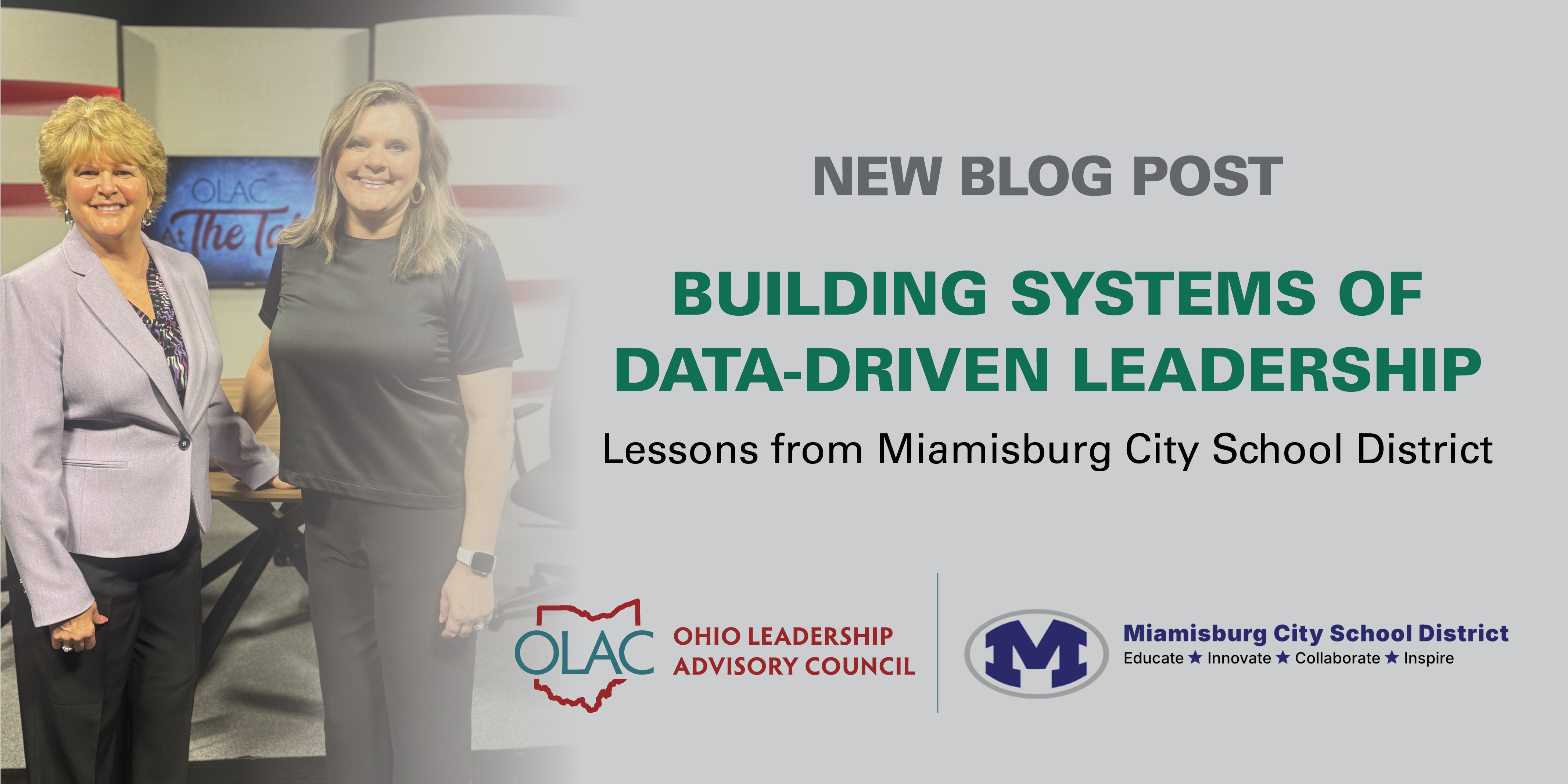Building Systems of Data-Driven Leadership: Lessons from Miamisburg City School District

For Ohio’s education leaders, the challenge isn’t finding data—it’s knowing how to use it effectively without overwhelming staff. In a recent episode of At the Table, Superintendent Stacy Maney of Miamisburg City Schools shared her journey of weaving data into every stage of her leadership, from classroom teacher to central office administrator. Her story highlights both the practical tools and the leadership mindsets needed to make data a driver of meaningful change.
From Teacher Teams to District Dashboards
Maney emphasized that her use of data began in teacher-based teams where formative and summative assessments provided common points for collaboration. “Pulling teachers together weekly to really connect the data to what they’re doing in their classroom became a point of enjoyment, I think, for myself and my teaching staff as a principal,” she recalled.
At the systems level, she explained the importance of dashboards that give a clear, one-stop look at student progress. “A data dashboard is critical to be a one-stop shop—to be able to pull up data that shows us the whole picture of district level, building level, even down to individual student level,” she said. Streamlined access ensures that conversations stay focused on root causes rather than “paralysis by analysis.”
Making Data Meaningful for Educators
For data to translate into action, staff must first understand what assessments measure and why they matter. “It begins with really training about the data point and the system and or assessment that we’re giving,” Maney noted. Shared understanding allows teachers to move beyond numbers to the critical question: “Once we know what it means—so what, now what?”
Her vision of the “perfect environment” for teachers includes consistent meeting structures, clear expectations, and common data formats that make analysis approachable. “By making sure we’re all using the same data source when we come to the table together, the data is in the same format, so that begins the consistent conversation, the clear expectations,” she explained.
Leadership Lessons Along the Way
Maney also reflected on her broader leadership journey. Early experiences, including navigating her first principalship without an assistant or support staff, became a “boot camp” that built resilience and problem-solving skills. Those challenges, she explained, taught her that “being able to lead others when you’ve actually done the work that they’re doing…is pretty critical.”
As she advanced, she recognized the importance of shared leadership—bringing experts to the table, building trust, and tapping into resources like the Ohio Leadership Advisory Council (OLAC) modules, templates, and videos to strengthen team capacity. “The best leader is not the smartest person in the room. The best leader is the one that builds the team of the smartest people in the room,” she said. For aspiring leaders, her advice is clear: seek varied experiences, reflect constantly, and be intentional about growth. “Become a sponge. Self-reflect and get as many quality experiences that are varied as you can,” she urged.
Ohio’s schools face complex challenges, but Maney’s example underscores that with the right systems, training, and mindset, data can unite teachers, administrators, and communities in pursuit of better outcomes for every student.
Learn more in Episode 19: Data-Driven Leadership in Education on At the Table.